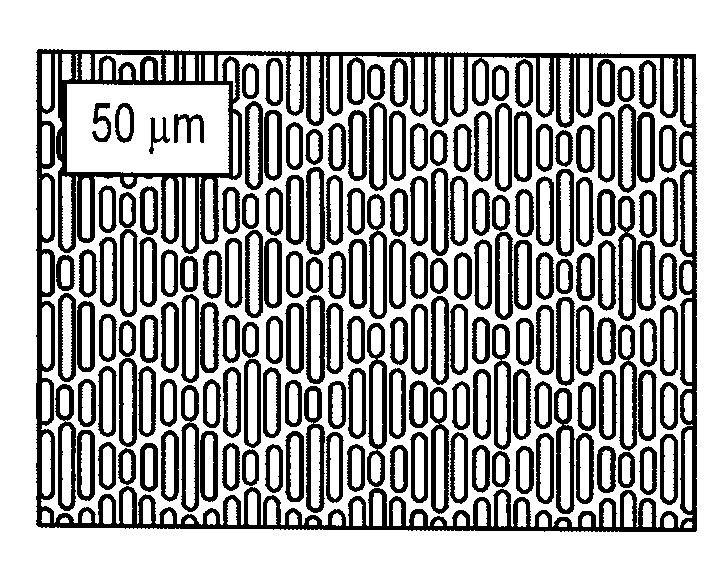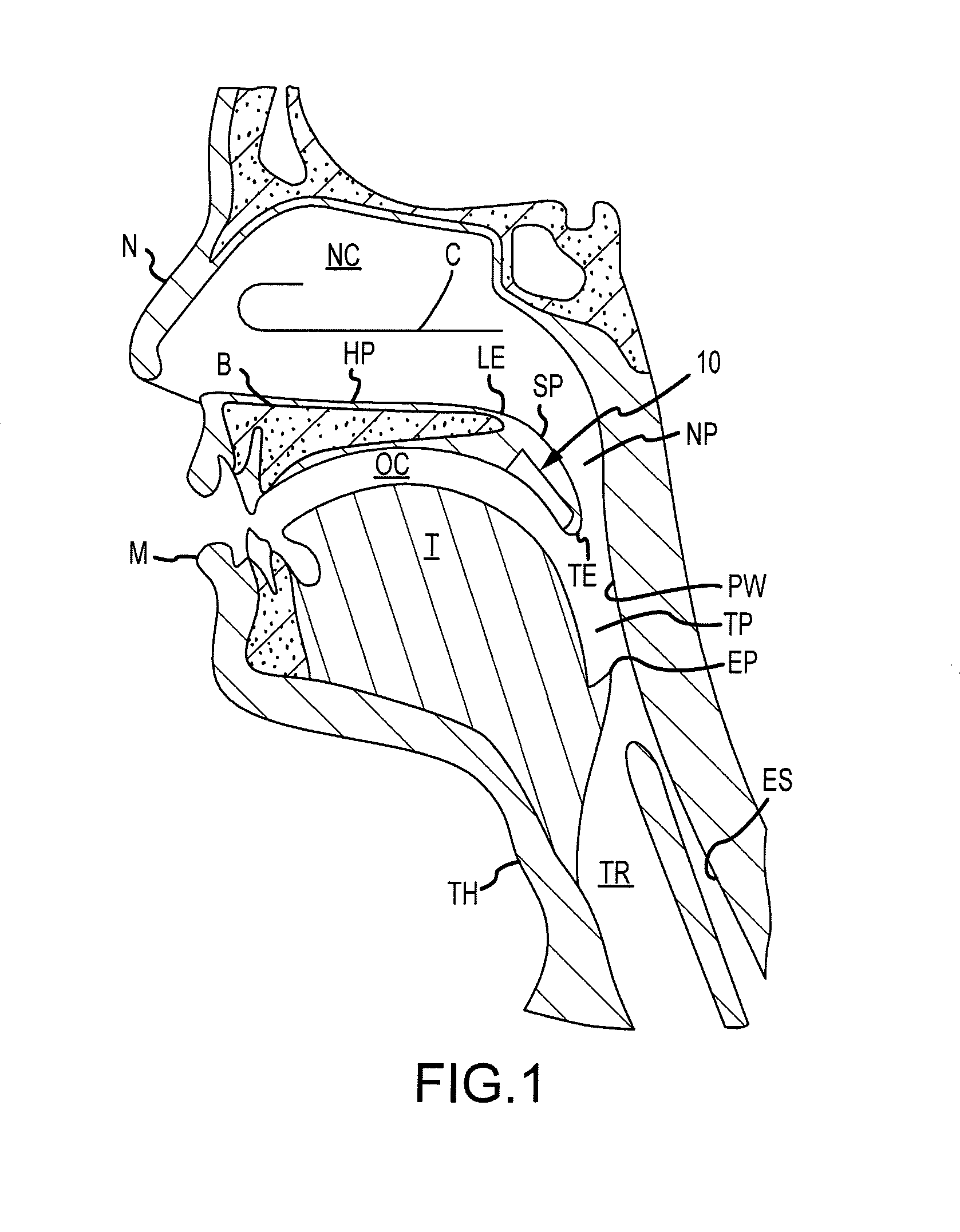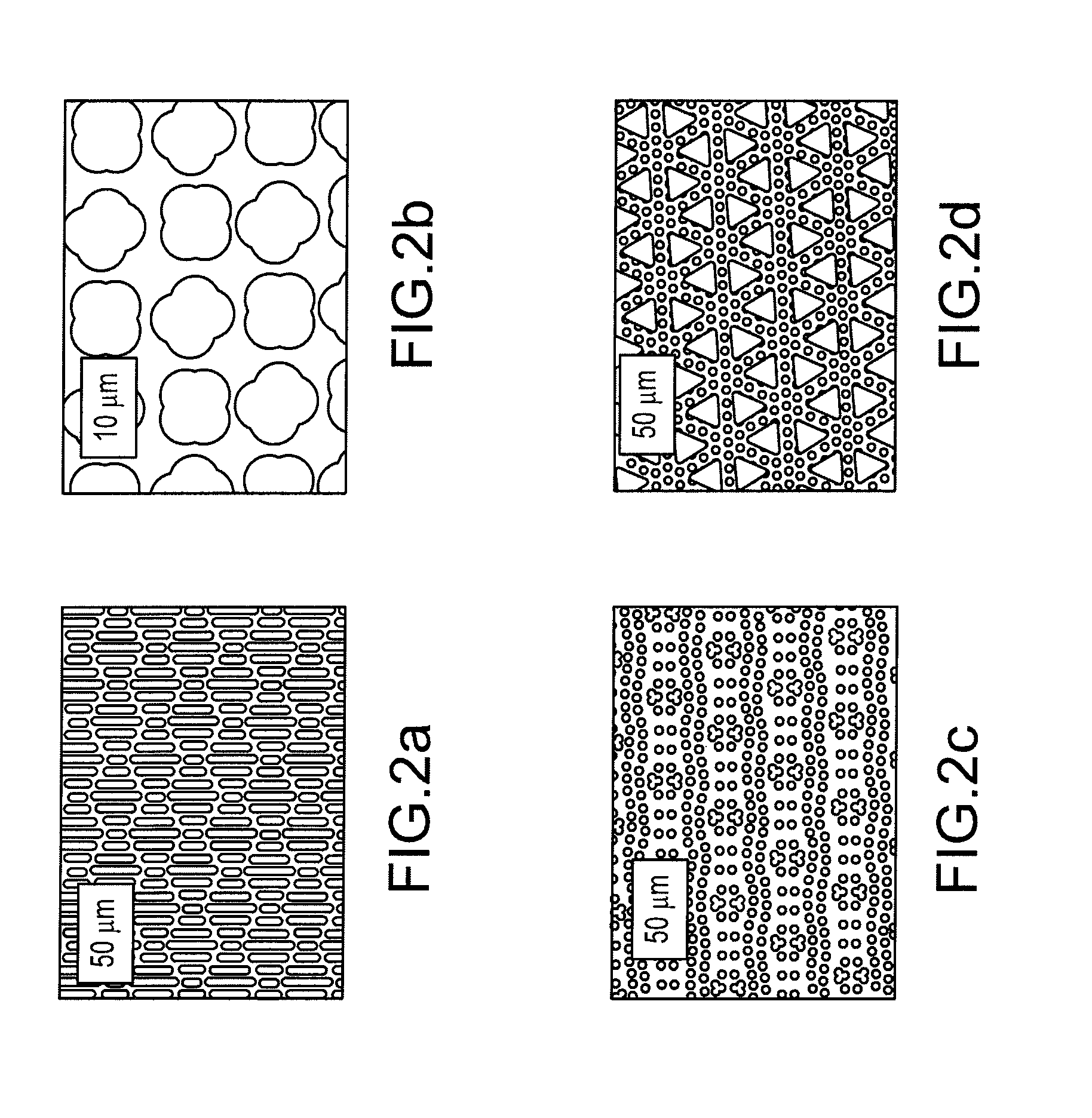Buccal bioadhesive strip and method of treating snoring and sleep apnea
a bioadhesive strip and strip technology, applied in the field of snoring and sleep apnea treatment, can solve the problems of uncomfortable and awkward use of jaw or tongue adjustment devices, and achieve the effects of reducing costs, facilitating manufacturing of devices for use, and maintaining film uniformity
- Summary
- Abstract
- Description
- Claims
- Application Information
AI Technical Summary
Benefits of technology
Problems solved by technology
Method used
Image
Examples
Embodiment Construction
[0149]Snoring is attributable to vibration of the soft palate SP. Vibratory action of the nasal concha C and the pharyngeal wall PW can also contribute to snoring sounds. It is not uncommon for vibratory action from more than one region of the naso-pharyngeal area to contribute to snoring sounds. Sleep apnea can result from partial or full collapse of the naso-pharyngeal wall during sleep. The present invention provides a non-surgical procedure to alleviate snoring and thus, is devoid of the pain, incisions, pre- and post operative requirements and complications, etc. of surgical procedures used to address snoring problems. The strips 10 are applied in a temporary rather than permanent manner and thus avoid the complications one may have when micro-beads are implanted into tissue that may cause infections, adverse reactions, etc. No prior art method or device employed in the battle against snoring offers such a variety and flexibility of treatment options as do the various embodimen...
PUM
 Login to View More
Login to View More Abstract
Description
Claims
Application Information
 Login to View More
Login to View More - R&D
- Intellectual Property
- Life Sciences
- Materials
- Tech Scout
- Unparalleled Data Quality
- Higher Quality Content
- 60% Fewer Hallucinations
Browse by: Latest US Patents, China's latest patents, Technical Efficacy Thesaurus, Application Domain, Technology Topic, Popular Technical Reports.
© 2025 PatSnap. All rights reserved.Legal|Privacy policy|Modern Slavery Act Transparency Statement|Sitemap|About US| Contact US: help@patsnap.com



